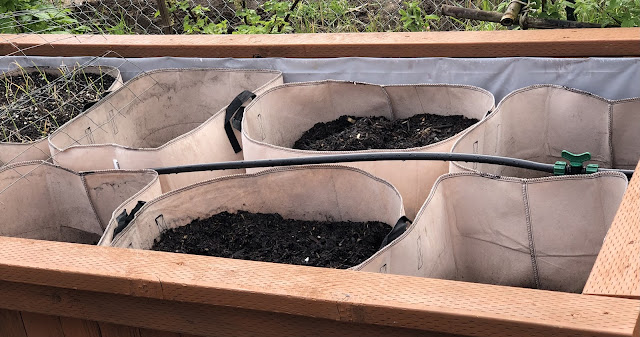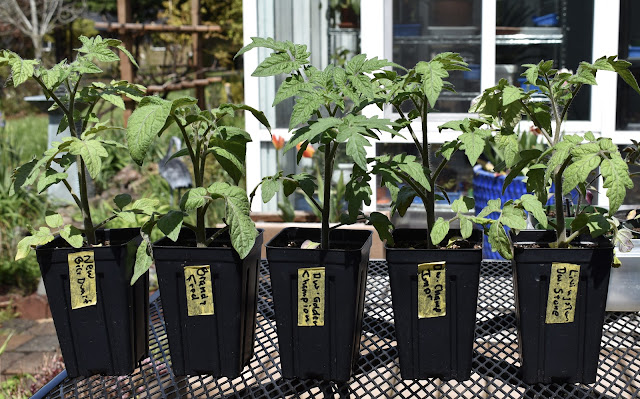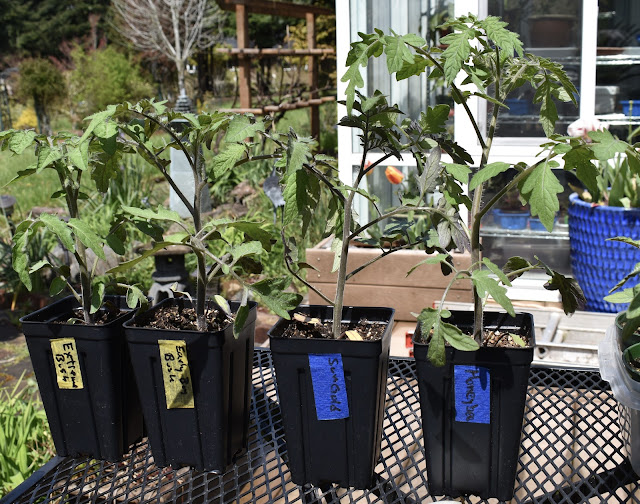Last year, the areas where I installed drip irrigation were so much easier to water. For areas without the drip lines, I had to carry buckets of water or haul garden hose around. I'm not always up to all that work, especially in the heat when it is needed the most.
Plus of course, drip is considered more water conservation friendly. So win/win.
However, I had to pull out the lines to install and repair the raised beds.
Time to get to work before summer. Waiting too long made it harder for me last year.
This year, each of the beds will have a shut off valve. So when water isn't needed for a particular crop, I can turn off that bed's water supply and still water the others. Or, when one needs less water thN the others, I can control that.
This is the start of the system for the tall raised bed. Next it will need lines to distribute water to each plant. I may wait until the lettuce and radishes are done, and tomato plants are in place. It's not needed yet.











